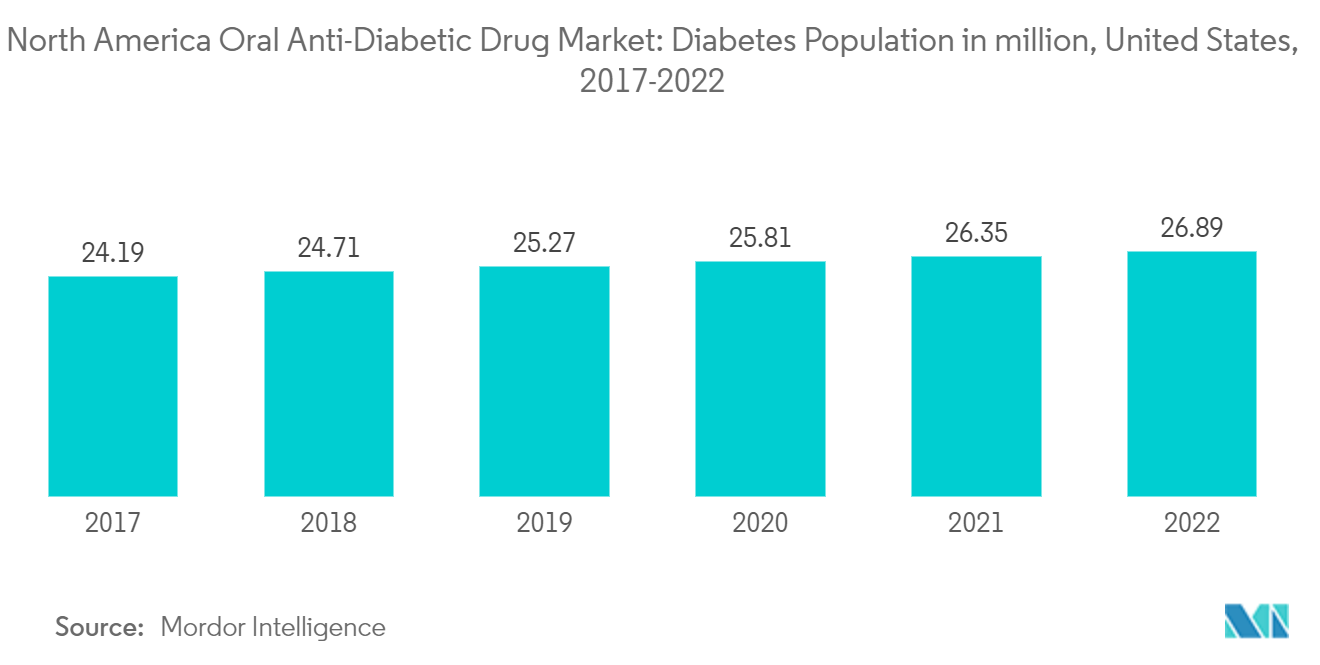Market Trends of North America Oral Anti-Diabetic Drug Industry
Biguanide Segment Occupied the Highest Market Share in the North America Oral Anti-Diabetic Drugs Market in 2022
The drug metformin is categorized as a biguanide and is used to treat type 2 diabetes. For its "off-label" use in treating persons with disorders like insulin resistance, it is prescribed. Since metformin therapy was introduced, a large number of patients have been successfully treated with this widely accessible drug with a good risk/benefit profile and is advised by IDF recommendations as a first-line prescription. As a result, metformin continues to be the most widely prescribed oral antidiabetic drug in the world, being prescribed in 45-50% of all prescriptions and being taken by more than 150 million people annually. The large market share is a result of long-term favorable experience with metformin use, strong evidence of clinical efficacy, safety, high adherence rate, low cost, widespread availability, and cost-effectiveness. Metformin is one of the "medicines that satisfy the priority of healthcare demands of the population," according to the World Health Organization.
Those with insulin-dependent or type 1 diabetes cannot benefit from metformin since their pancreas cannot make insulin. The best way to manage their blood sugar is with insulin injections. However, there are a number of non-FDA-approved uses for metformin, such as the control of weight gain brought on by antipsychotics, type 2 diabetes prevention, and the treatment and prevention of polycystic ovarian syndrome. The only antidiabetic for pre-diabetes that is currently approved by the ADA is metformin. Researchers are looking at the potential indications of metformin for its potential antiaging, anticancer, and neuroprotective benefits.
Owing to the aforementioned factors, the market is expected to grow during the forecast period.

The United States is Expected to Dominate the North America Oral Anti-Diabetic Drug Market
The diabetes Population in North America is expected to increase with a CAGR greater than 1.9% over the forecast period.
According to the American Diabetes Association, 1.4 million Americans are thought to receive a diabetes diagnosis each year. In Canada and other North American nations, diabetes is one of the main killers. The development of novel medications to give diabetic patients more treatment options has been driven by the disease's increasing incidence, prevalence, and progressive nature. More than half of sales in the anti-diabetic market are currently made by non-insulin medications, which are utilized as first-line therapies for type 2 diabetes patients. Sodium-glucose cotransporter-2 inhibitors and dipeptidyl peptidase-4 inhibitors (DPP-4) are two significant groups that have just entered this market. In order to lower blood sugar levels in persons with type 2 diabetes, oral antidiabetic medications function in a variety of methods. Some increase pancreatic insulin secretion, while others enhance cell insulin sensitivity or stop the liver from producing glucose. Others reduce the rate of glucose absorption following meals.
For instance, Semaglutide was given FDA approval in June 2021 to be used in conjunction with diet and exercise to treat obesity. Exenatide and Dulaglutide are not FDA-approved medications for treating obesity. Yet, both drugs have been proven to be effective in helping people lose weight, and clinical use of both is growing. The effectiveness of GLP-1RAs in the management of diabetes has been examined in a number of trials. Many pharmaceutical companies also provide discounts on the price of prescription prescriptions itself, in addition to using health insurance to assist in paying for the expenses of prescription medications. The ADA offers assistance with insulin and diabetes medication costs as well.
Owing to the aforementioned factors, the market is expected to grow during the forecast period.


